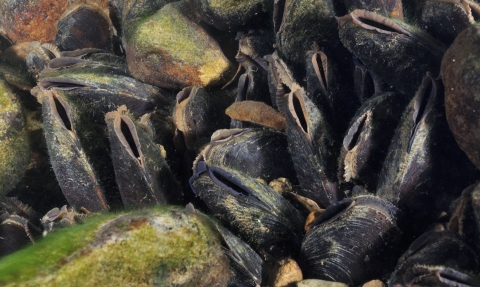
Freshwater pearl mussel. Photo, Linda Pitkin/2020VISION
Freshwater pearl mussels - A species on the brink
Freshwater Pearl Mussel Project
Devon Wildlife Trust delivered pioneering work to conserve a rare and endangered species on the River Torridge
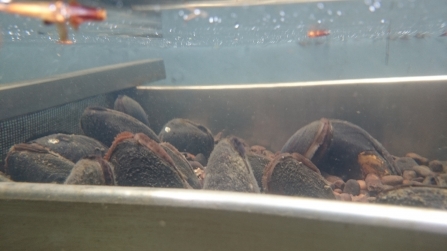
Once common, now rare
Freshwater pearl mussels (Margaritifera margaritifera) were formerly widespread in England and Wales, but currently, the only remaining populations in Southern England are on the Taw and the Torridge, and in very low numbers.
On top of this, these populations are in serious decline and are not thought to have bred successfully since the 1960s.
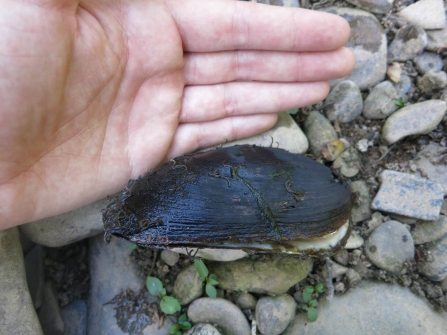
What are freshwater pearl mussels?
Freshwater pearl mussels are filter feeding molluscs that are found in river beds; they can live for over 120 years!
The species colonised most of its current range after the last ice age (around 12,000 years ago), but are now listed on the IUCN red list as endangered.
Healthy populations require clean, nutrient poor, well oxygenated waters in order to survive and reproduce.
These mussels are an indicator species so if we can get river conditions right for them, it will benefit a suite of other species including invertebrates, fish, birds and mammals.
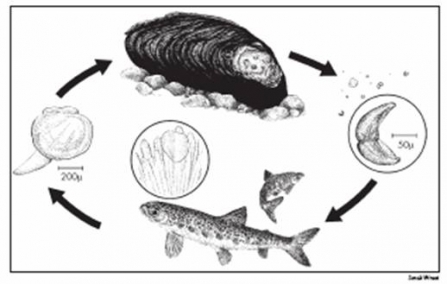
A fascinating life cycle
Freshwater pearl mussels have a fascinating lifecycle, of which part is spent attached to the gills of young salmon and brown trout. Over 5000 juvenile mussels have been found on the gills of a single fish.
Lack of host fish in rivers is one of the problems leading to the decline in populations. However, other factors impacting populations include:
- Habitat degradation
- Water quality issues (resulting from inputs of nitrate, phosphate and soil run-off)
- River engineering
- Historic pearl fishing
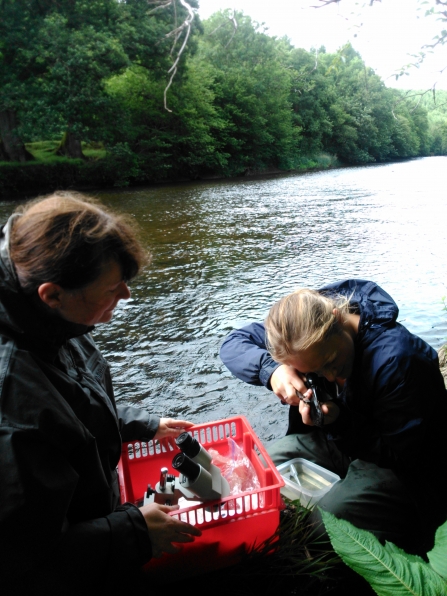
The project
This project focussed on the River Torridge in North Devon and seeked to achieve one key aim - to safeguard the future of some of the most important freshwater pearl mussel populations remaining in England through river restoration, engagement of local communities and captive breeding.
This project was part of the Northern Devon Nature Improvement Area landscape scale programme. Other partners in the project include: the North Devon Biosphere, the Environment Agency, Tarka Country Trust and Westcountry Rivers Trust.
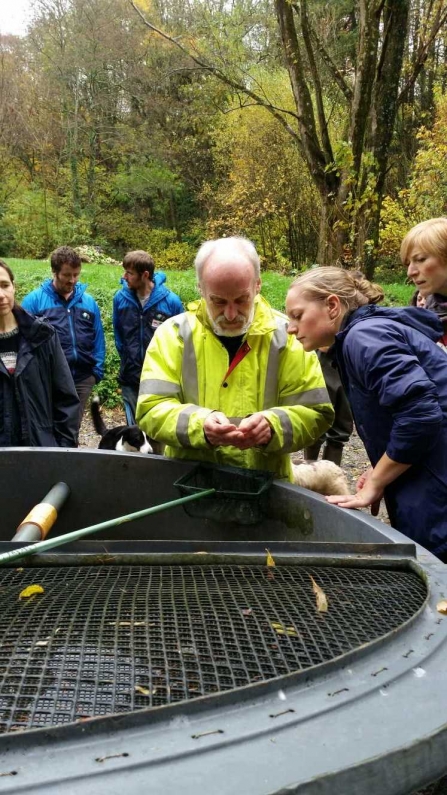
Freshwater pearl mussel hatchery
What was achieved?
The Hatchery
During the project, an effort to safeguard future populations was trialled through a short-term captive rearing programme, using new techniques developed in Ireland. The technique involved the short-term transfer of female adult mussels that show evidence of brooding to a hatchery facility, with the hope of achieving encystment (or attachment) onto host fish, brown trout. The mussels were transferred to the hatchery during the early brooding phases and returned to the Torridge after glochidia release. The fish were then maintained at the hatchery until glochidia drop-off the following spring.
The method was delivered over two years with successful excystment both years and returning juvenile mussels to the Torridge for the first time in over 50 years. The short-term translocation was delivered through the support of experts including Ian Killeen, Evelyn Moorkens and the Freshwater Biological Association, and under a Natural England licence.
River improvements
In addition to this, work to improve habitat and water quality in the River Torridge was a key priority. Over the project, 46km river was surveyed and the following improvements were delivered:
- 12.6km watercourse protected through watercourse fencing and culverts to exclude livestock
- 9.4km² habitat protected either through watercourse fencing or direct in-river improvements to protect pearl mussel beds
- 5.7km watercourse improved through either coppicing or pollarding, large and small woody debris management, planting trees or willow stakes and woodland track work
The project delivered nearly 230 installations across 20 farms in total.
What’s next?
In 2019 fundraising was successful for an ambitious new project covering 22,000 hectares of the Torridge catchment. The new project will seek to restore stretches of the river, develop future juvenile reintroduction sites and improve habitat for fish and the endangered freshwater pearl mussel.
In the meantime, the Torridge River Restoration Project, a sister project within the Nature Improvement Area, is working to restore the River Torridge to benefit the pearl mussel and other wildlife.

This project was funded by Biffa Award

